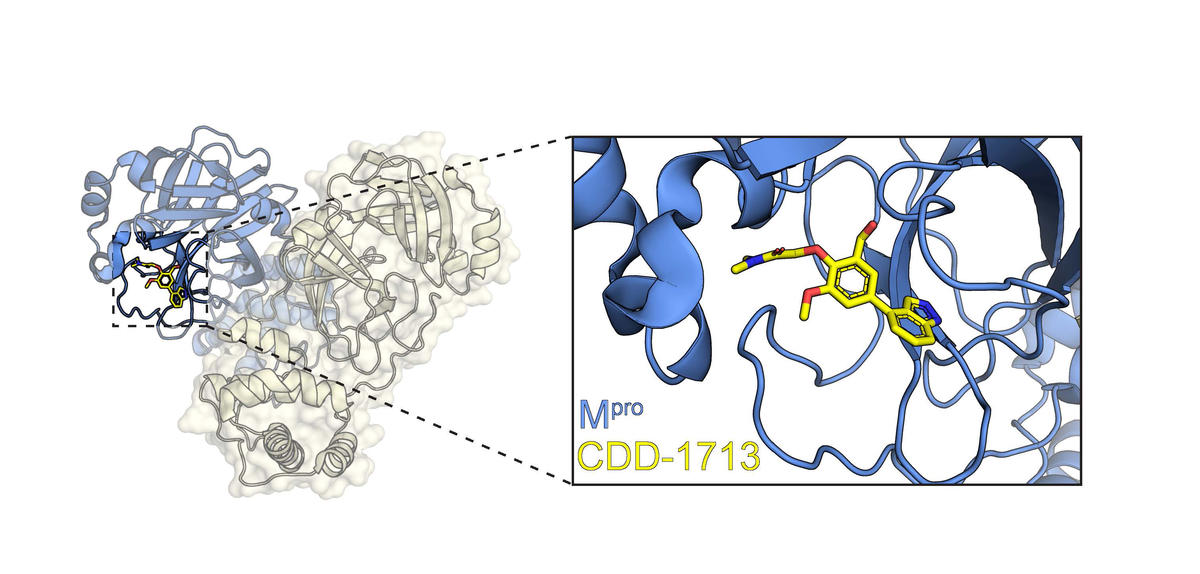
Schematic of SARS-CoV-2 main protease in complex with inhibitor CDD-1713 (image derived from x-ray structure PDB ID 7LTN; Chamakuri et al., 2022, PNAS, PMID: 34426525).
Project 3: Pandemic Virus Protease Inhibitors Abstract
The proteases of SARS-CoV-2 are scissor-like enzymes that precisely cut longer viral protein precursors into functional units required for pathogenesis. Proteases are essential drug targets due to their functions in virus replication and their ability to bind to drugs.
This project aims to develop chemical inhibitors of the main SARS-CoV-2 protease, Mpro, which is required for 11 distinct cutting events that are all needed for virus replication.
SARS-CoV-2 MPro is an enticing drug target because of its many divisions during the cell production process, which allows for many druggable surfaces, especially during the early stages of viral infection. In addition, this protease shares features with other coronavirus proteases, which suggests it may be possible to develop a universal coronavirus inhibitor against current and future pandemic-level viruses.
Similarly, Zika—a flavivirus—has a protease with many druggable surfaces. Therefore, a successful inhibitor for Zika could be used on other flaviviruses like Yellow Fever, Dengue Fever, Japanese encephalitis, and West Nile viruses.
During preliminary studies, we designed assays for the proteases, contributed to the wealth of structural, biophysical, and computational knowledge of the drug targets, and gathered multiple small molecule inhibitors for potential drug development.
We have two aims to expedite the achievement of our central goal.
In our first aim, we will work to identify small molecule inhibitors of these enzymes to maximize the chances of obtaining small molecule inhibitors for drug development.
In our second aim, we will prioritize potentially druggable inhibitors for further development by testing molecules in secondary and tertiary assays.
At all stages of development, specific hits will be evaluated quantitatively and tested using systems available for virus replication and pathogenesis with a living organism. In addition, this effort will develop multiple lead inhibitors for pre-clinical and clinical testing with industry partners to strengthen the drugs needed to end the COVID-19 pandemic and counteract future outbreaks.